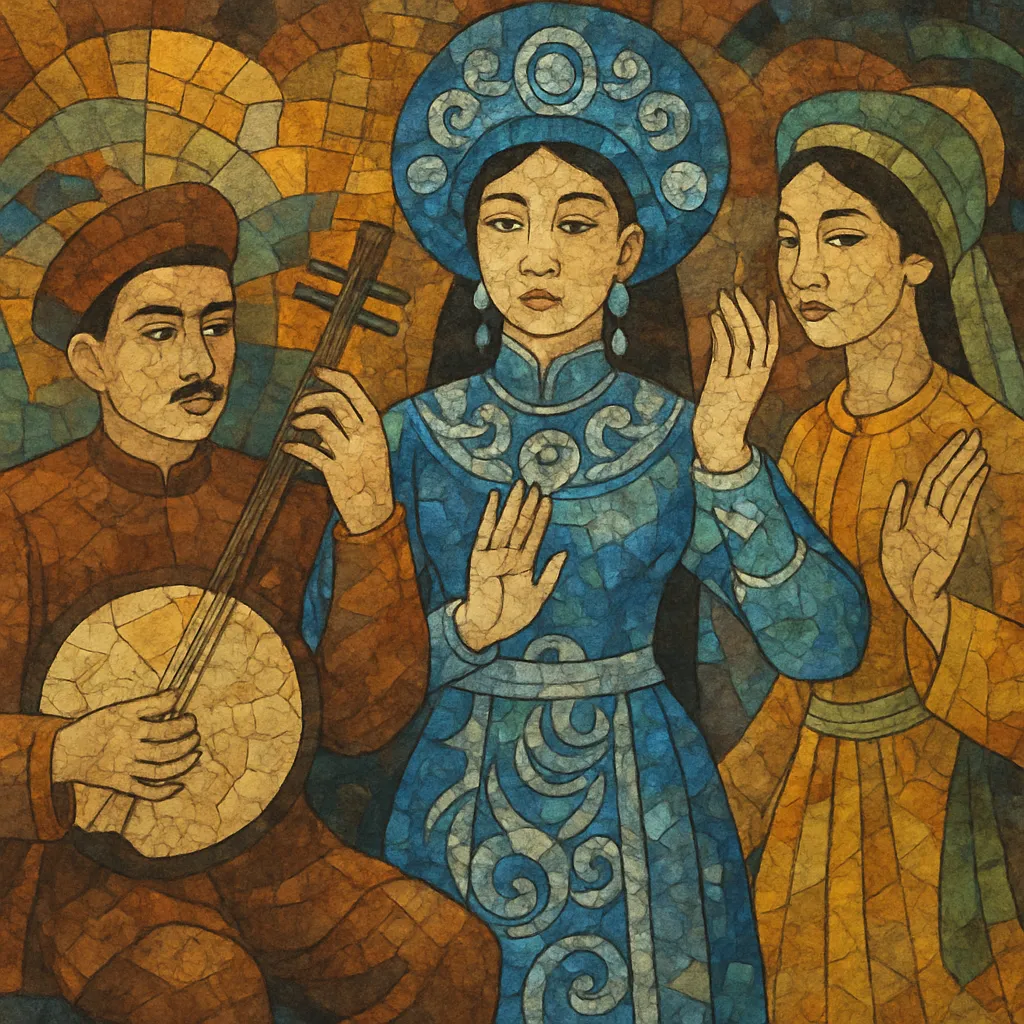Cải lương is a modern folk opera from southern Vietnam that combines traditional southern chamber music and vocal idioms with Western stagecraft. Its name literally means “renovated theatre,” reflecting its role as a modernization of older Vietnamese theatrical forms.
The genre features sung dialogue, arias, and recitative passages, with the melancholy, ornamented style of vọng cổ at its core. Performances use a mixed ensemble of traditional instruments (đàn kìm/nguyệt, đàn tranh, đàn cò/nhị, sáo trúc, đàn bầu) alongside the distinctive guitar phím lõm (a scalloped‑fret guitar enabling expressive bends and microtonal slides). Stories range from historical epics and moral tales to contemporary social dramas and romances, staged with elaborate costumes and stylized acting.
Cải lương emerged in the Mekong Delta and Saigon area during the late 1910s and 1920s as a reform of traditional theatre. It drew heavily from southern chamber music practices (đờn ca tài tử) and the newly crystallizing vọng cổ song type, while adopting narrative pacing, sets, and dramaturgy from Western opera/operetta and colonial-era popular theatre. Cao Văn Lầu’s circa‑1919 piece “Dạ cổ hoài lang” became the template for vọng cổ, which quickly became the emotional centerpiece of cải lương.
Troupes multiplied across southern Vietnam, standardizing repertoires and performance conventions. The ensemble blended Vietnamese instruments with the guitar phím lõm, enabling expressive slides and ornamentation suited to southern modal systems (hơi Bắc, Nam, Oán, Ai). Radio and recordings helped popularize star singers and signature plays.
Urban theatres in Saigon and the Mekong Delta hosted thriving circuits. Legendary performers (e.g., Út Trà Ôn, Thanh Nga) and composers (e.g., Viễn Châu) refined the long-form vọng cổ and integrated it into diverse narrative contexts—from historical dramas to contemporary social stories. This period defined many canonical works and vocal styles.
After 1975, cải lương faced changing cultural policies and audience tastes, yet it persisted through state troupes, televised programs, and diaspora stages (particularly in the United States). Hybrid forms such as tân cổ giao duyên (pop–vọng cổ fusion) broadened its reach. Contemporary revival efforts focus on archival preservation, new productions, youth training, and cross-genre collaborations.


